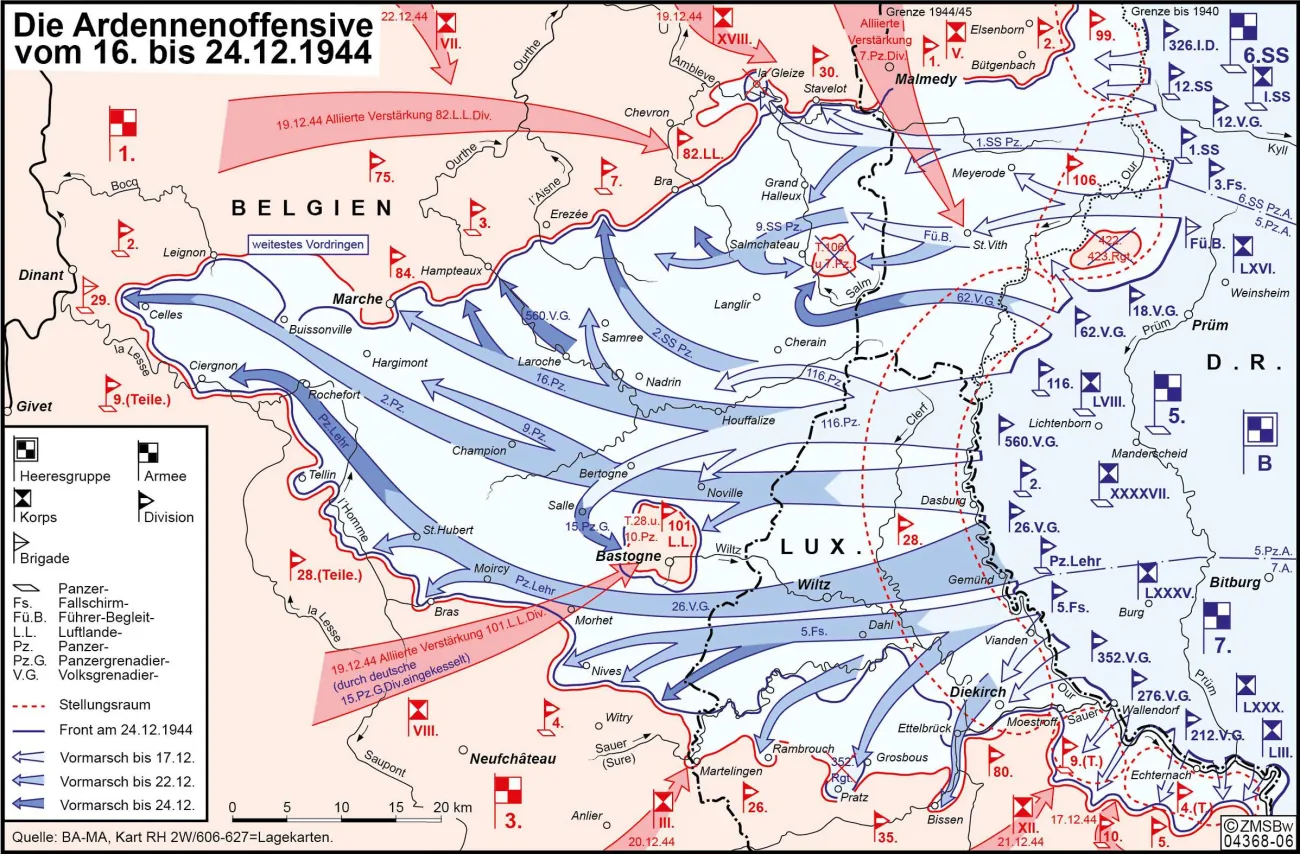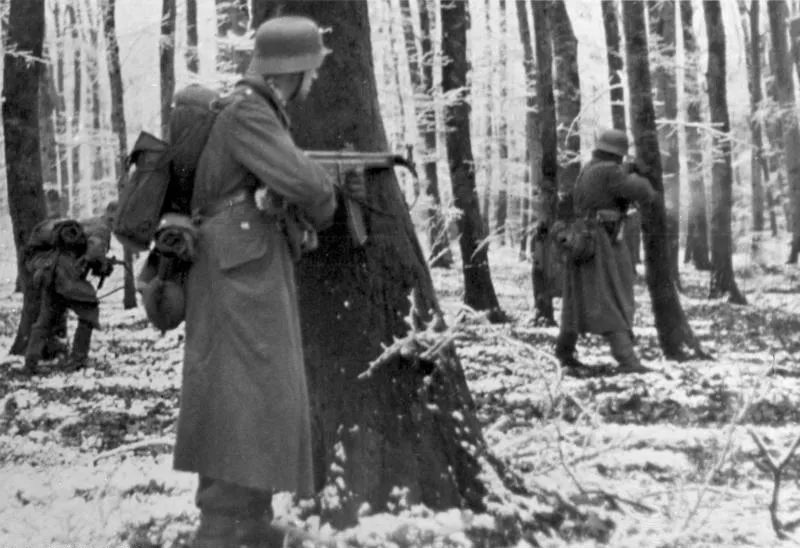The Battle of the Bulge
The Battle of the Bulge unexpectedly began on the 16th of December 1944, with a German attack on the Luxembourgish and Belgian Ardennes. Despite rumours, the American troops stationed in Luxembourg no longer expected a German offensive. Hitler had the utopian plan of capturing the port of Antwerp and forcing the Allies into a peace settlement. The unprepared American troops were overrun, and also thick fog grounded the Allied air force. On the 22nd of December, General George S. Patton launched a massive counteroffensive. With full force, he pushed into the German attack wedge. It became one of the bloodiest battles of World War II: 12,652 German soldiers, 10,733 American soldiers, and 500 Luxembourgish civilians lost their lives, and many villages in the Oesling region were completely destroyed. Only at the end of January 1945, German troops were pushed back to their initial positions. The heavy German losses in soldiers, equipment, and fuel accelerated the collapse of the Third Reich. With the German capitulation on the 8th of May 1945, World War II came to an end in Europe.



